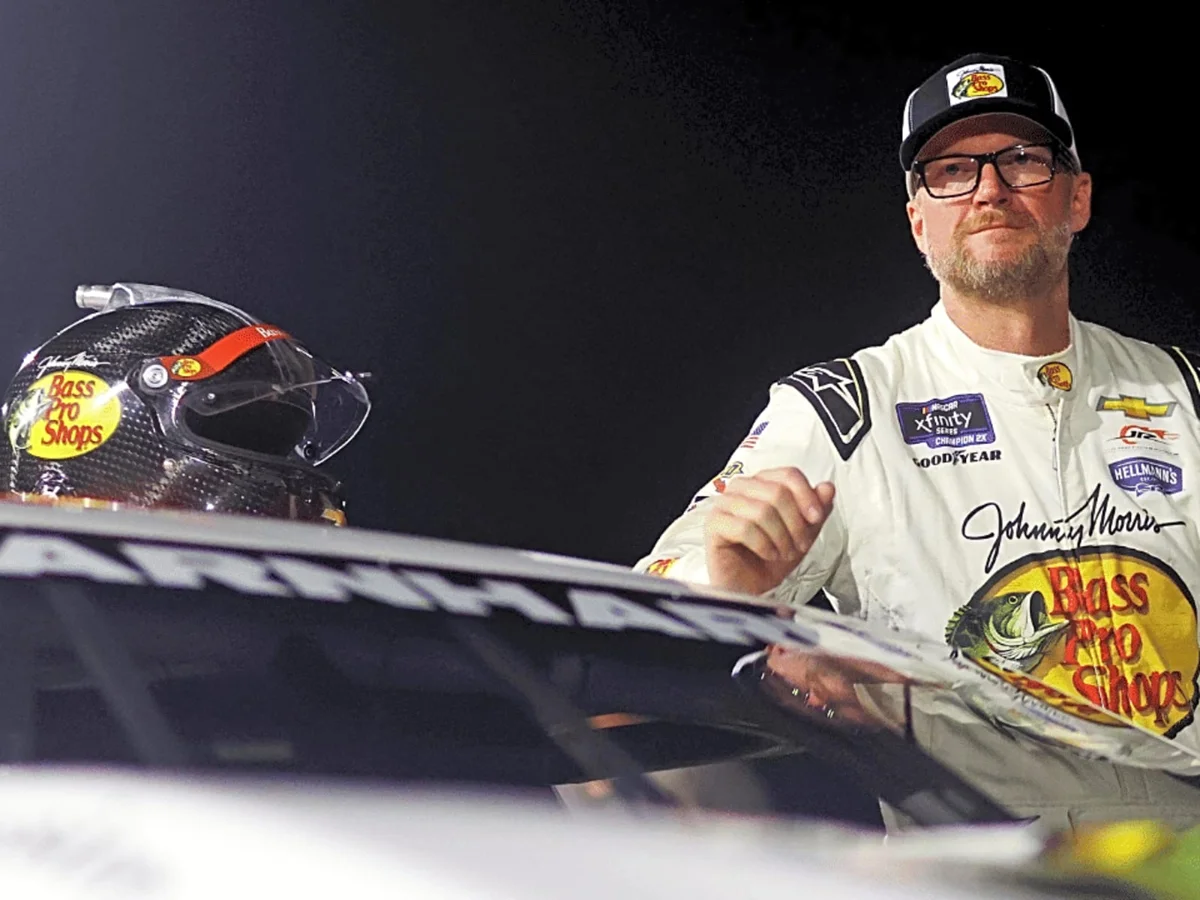Dale Earnhardt Jr Xfinity debut at Myrtle Beach in 1996 left the NASCAR star with lasting memories of one of his most challenging days on the track. During a recent conversation, Earnhardt Jr. disclosed the intense physical struggles he endured, shedding light on conditions that modern safety gear now addresses.
Facing Unexpected Danger on Race Day
Dale Earnhardt Jr. is no stranger to adversity behind the wheel, having survived everything from engine fires to serious crashes throughout his storied career. Yet when asked by reporter Jeff Gluck to reflect on his worst racing experience, Earnhardt Jr. recounted the events of a scorching day at Myrtle Beach during his Xfinity Series debut. That afternoon in 1996, temperatures soared to around 95 degrees, and before even getting into his main race car, he had already completed a grueling 100-lap Late Model stock event on the same track. Earnhardt Jr. was accustomed to regular Late Model races, but the double-duty schedule placed unprecedented demands on his body.
What the young driver did not anticipate was the severe impact of competing in two consecutive, physically exhausting races under such extreme heat. By the waning laps of the Xfinity debut, he found himself in trouble. The toll on his body became acutely evident well before the checkered flag, setting up a test of will and endurance that left a mark on his NASCAR journey.
Recounting an Ordeal of Dehydration and Delirium
Earnhardt Jr. vividly described the symptoms that struck him with 20 to 30 laps remaining in the race. Overwhelmed by dehydration and intense heat, he expressed how his dehydrated state almost overcame him in the final laps. He stated,
“I’m guessing it was about 95 degrees, middle of the afternoon, and before the race, I had a 100-lap Late Model stock race. I was running at Myrtle Beach every week in my Late Model car, so running a 100-lap feature in the middle of the afternoon wasn’t a big deal.”
— Dale Earnhardt Jr., NASCAR driver
Recalling the most dangerous phase, Earnhardt Jr. said,
“It grabbed my attention, and immediately I started getting really dizzy and started having a hard time staying awake and getting through the final laps. I’d basically just gotten so dehydrated that I was delirious, and it was really scary.”
— Dale Earnhardt Jr., NASCAR driver
The lack of modern cooling technology made these races even more grueling. At the time, drivers had no advanced ways to counteract heat stroke or maintain hydration aside from traditional methods, which made such experiences not uncommon, though rarely discussed.
Modern Cooling Gear Changes the Game
Today’s NASCAR drivers benefit from innovations that dramatically improve cockpit safety, particularly cool suits that control body temperature and reduce dehydration risk. These advances mean that the kind of ordeal Dale Earnhardt Jr. faced in his Xfinity debut is far less likely in current races. Cool suits regulate a driver’s core temperature, helping avoid heat stress even during the hottest events—technology that was not available during Earnhardt Jr.’s early years.
Erik Jones of Legacy Motor Club has spoken about how far driver comfort has come, saying,
“There were days when you’d get out of those hot races and you were done and wiped out, even as much as you trained or didn’t train. So, this has changed it to where if it’s a 90-degree day, I don’t think anyone is worried about the heat in the car anymore.”
— Erik Jones, NASCAR driver
Michael McDowell has also highlighted the protective benefits of these cool suits, noting their ability to keep vital organs cool and even regulate heart rate, improving racing safety and performance. Meanwhile, Shane van Gisbergen has taken cooling a step further by pre-chilling his suit before donning it, maximizing the cooling effect inside the car. Looking back, it is evident that if such equipment had existed during his 1996 debut, Dale Earnhardt Jr., and drivers like him, could have avoided alarming physical episodes entirely.
Enduring Impact and Legacy
The ordeal at Myrtle Beach stands out in Dale Earnhardt Jr Xfinity debut as a clear reminder of how far safety and technology have come in racing. As drivers and teams continue to find new ways to improve health and performance in extreme environments, Earnhardt Jr’s story resonates as both a cautionary tale and a testament to racers’ resilience. The evolution of heat management technology not only protects current drivers but also honors the experiences and challenges faced by legends of the sport, shaping NASCAR for future generations.
12 Questions with @DaleJr just dropped: https://t.co/x3b6mBWEHx
— Jeff Gluck (@jeff_gluck) October 22, 2025
